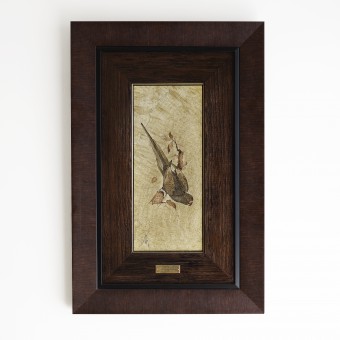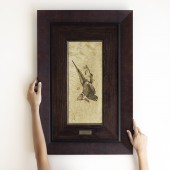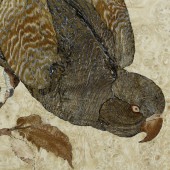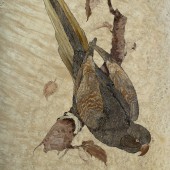Forest Heart Wood Picture by Mohamadali Vadood |
Home > Winners > #86837 |
 |
|
||||
| DESIGN DETAILS | |||||
| DESIGN NAME: Forest Heart PRIMARY FUNCTION: Wood Picture INSPIRATION: Natural wood structure, consisting of a variety of colours, illusory lines, special texture and darkened and bright spots with special makeup during the growth of the tree, can broaden any individuals' horizon in many impossible to imagine ways. The cutting angle of the wood makes these motifs look even more varied on the surface of a piece, cut from the main wood. With this discovery of what the cutting angle leads to what l am thinking of, l came up with this idea that I would find a base for this to control the patterns, lines and colors of the wood to create an originally incredible image based on the nature of wood and not manual changes. UNIQUE PROPERTIES / PROJECT DESCRIPTION: This art project tries to fulfill three intended purposes: 1. Taking a fresh look at wood to explore a new perception in it and to harmonize with its pure nature as well, so we can come up with original ideas to create real art. 2. Applying an innovative technique in working with wood and also in using common tools so we could achieve adequate quality in our performance. 3. Discovering, creating and defining new ways to gain desired images by tracing natural patterns in pieces of wood and making a synthesis between them. OPERATION / FLOW / INTERACTION: In this project-like work of art you can see a specific way of working with wood using the fewest pieces and mainly benefiting from the natural colour and also texture of the wood so you can build up a perfectly complete image, which actually cannot be repeated or copied as patterns in each piece are naturlly unique. Thus, it can be artistically used as a piece of decoration, specifically in wood-based decorated spaces on the wall or a shelf. As for the transformation, it could be carried in a box of the same size and as it deos not weigh that much or take up much space, it does not matter a special transport. PROJECT DURATION AND LOCATION: This work was created, in Tehran, started and finished in 2010, and to find appropriate woods they were provided from different places. It took 6 months to accomplish the project as it turned out to be time-consuming to find desired wood pieces. FITS BEST INTO CATEGORY: Fine Arts and Art Installation Design |
PRODUCTION / REALIZATION TECHNOLOGY: Defining a geometrical table based on cutting angles plus a method of cutting for even 1 mm pieces, and trying to have desired wood patterns and spots by restoring in perfect conditions like natural moisture percentage, etc. to benefit from bacteria activity were the main production phases. The types of wood, they were haloxylon for the body and the head, barberry for the tail, fig for the feet, tree of heaven for the nose and the leaves, acer monspessulanum (keykom) for the leaves again, jujube for the beak, European ash for the background and wenge for the margin. The tools were coping saw, plane, sanding paper, nail and hammer. SPECIFICATIONS / TECHNICAL PROPERTIES: The size is 35 in 60 cm. The thickness of wood sheets were 4 mm. The number of pieces are 47. The weight is 700 gr. All the colours and shades are chosen carefully to seize the natural fortuities in the woods. TAGS: naqshbandi, wood pattern tracing, marquetry, wood pattern, double cut, wood texture, wood cut, coping saw, wood character, wood art RESEARCH ABSTRACT: Naqshbandi is a new method or attitude which is used to create this piece and aims to benefit from connecting lines, expanding textures from one piece to another, and deciding upon the true light shade, not just the colour contrast and various tonalities as it is usual in other works of marquetry. It requires the artist to make a full-hearted attempt to harmonize themselves with the nature of wood as much as possible, and help them grow a clear perception of their work and gain a direct inspiration from natural fortuities given by wood. So, the whole thing will finally sound the art of nature in the eye of beholder. CHALLENGE: Defining geometrical patterns of cuts so that pieces of wood could save their original patterns, overcoming the thickness of cutline without using primer, and coming up with the idea of what I call Double-cut at the time of sanding to prevent the destruction of sub-patterns and sub-textures and save the main image are the parts of this work that ended up being its challenges. ADDED DATE: 2019-05-12 11:54:21 TEAM MEMBERS (1) : the artist and the founding father of the method: Mohammad-ali Vadood IMAGE CREDITS: Mohamadali Vadood, 2019. |
||||
| Visit the following page to learn more: http://shorturl.at/gnswM | |||||
| AWARD DETAILS | |
 |
Forest Heart Wood Picture by Mohamadali Vadood is Winner in Fine Arts and Art Installation Design Category, 2019 - 2020.· Press Members: Login or Register to request an exclusive interview with Mohamadali Vadood. · Click here to register inorder to view the profile and other works by Mohamadali Vadood. |
| SOCIAL |
| + Add to Likes / Favorites | Send to My Email | Comment | Testimonials | View Press-Release | Press Kit | Translations |







